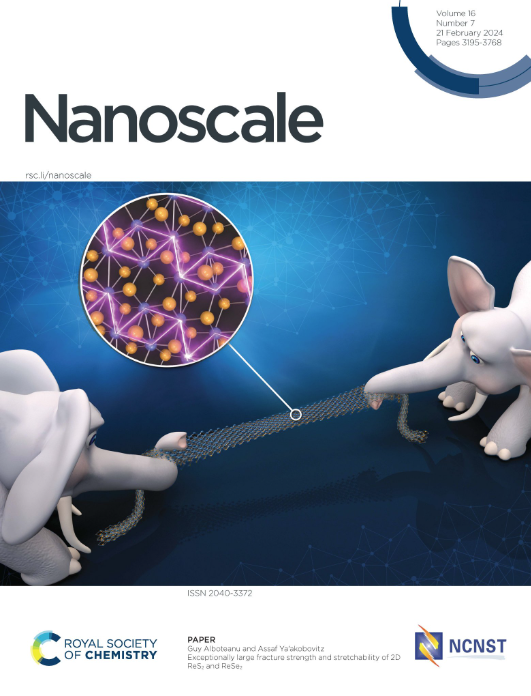二维WS2量子点的可调谐光致发光
IF 5.1
3区 材料科学
Q1 CHEMISTRY, MULTIDISCIPLINARY
引用次数: 0
摘要
激光在液体中合成纳米颗粒在试管内制造纳米材料的方法发展史上已经翻开了新的一页。该主题的一个引人入胜的延续是具有复杂拓扑/形态的量子级纳米结构的合成,当其制造的初始材料是强各向异性范德华(vdW)和二维材料时。两方面同时决定了这种纳米结构的光致发光特性:发射波长的依赖关系是由传统半导体中的尺寸量化效应决定的,而光致发光强度是由纳米结构中能带的相对位置与层数的依赖关系决定的。本文报道了直接激光法和辅助超声法合成WS2粉末量子级光致发光纳米结构的研究进展。通过结合不同的溶剂和不同的处理时间,证明了在宽光谱范围内调节二维WS2薄片和量子点的光致发光光谱的可能性。本文章由计算机程序翻译,如有差异,请以英文原文为准。
Tunable photoluminescence on 2D WS2 quantum dots
Laser synthesis of nanoparticles in a liquid has already opened a new page in the history of development of the in-test-tube methods for fabrication of nanomaterials. A fascinating continuation of the topic is the synthesis of quantum-sized nanostructures with complex topology/morphology, when the initial materials for their fabrication are strongly anisotropic van der Waals (vdW) and 2D materials. Two aspects determine the photoluminescent properties of such nanostructures at once: the dependence of the emission wavelength is determined by the size quantization effects as in conventional semiconductors, while the photoluminescence intensity is resulted from the dependence of relative positions of the energy bands on the number of layers in nanostructure. In this work, the progress on the development of straightforward laser and auxiliary ultrasonic methods for the synthesis of quantum-sized photoluminescent nanostructures from WS2 powder is reported. By combining various solvents and different treatment times, the possibility of tuning the photoluminescence spectra of the obtained 2D WS2 flakes and quantum dots over a wide spectral range is demonstrated.
求助全文
通过发布文献求助,成功后即可免费获取论文全文。
去求助
来源期刊

Nanoscale
CHEMISTRY, MULTIDISCIPLINARY-NANOSCIENCE & NANOTECHNOLOGY
CiteScore
12.10
自引率
3.00%
发文量
1628
审稿时长
1.6 months
期刊介绍:
Nanoscale is a high-impact international journal, publishing high-quality research across nanoscience and nanotechnology. Nanoscale publishes a full mix of research articles on experimental and theoretical work, including reviews, communications, and full papers.Highly interdisciplinary, this journal appeals to scientists, researchers and professionals interested in nanoscience and nanotechnology, quantum materials and quantum technology, including the areas of physics, chemistry, biology, medicine, materials, energy/environment, information technology, detection science, healthcare and drug discovery, and electronics.
 求助内容:
求助内容: 应助结果提醒方式:
应助结果提醒方式:


